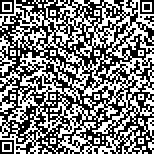|
|
|
| |
|
|
| 本文已被:浏览 901次 下载 1734次 |

码上扫一扫! |
|
|
| 海洋寄生甲藻血卵涡鞭虫生活史及温度对其发展的影响 |
|
吕晓阳1,2, 黄骞1,2, 李蒙1,3, 刘炜鑫1,2, 李才文1,3,2,4
|
|
1.中国科学院海洋研究所 海洋生态与环境科学重点实验室 山东青岛 266071;2.中国科学院大学 北京 100049;3.青岛海洋科学与技术试点国家实验室 海洋生态与环境科学功能实验室 山东青岛 266237;4.中国科学院海洋大科学研究中心 山东青岛 266071
|
|
| 摘要: |
| 血卵涡鞭虫(Hematodinium spp.)是一类感染海水甲壳类的致病性寄生甲藻,在全球主要经济蟹、虾类中频繁导致流行性病害,严重危害我国沿海重要经济蟹类的渔业生产。为进一步厘清血卵涡鞭虫的生活史,通过血涂片法、H&E染色法(hematoxylin-eosin staining,苏木精-伊红染色法)和体外培养方法系统研究了从我国沿海天津厚蟹(Helice tientsinensis)中分离的血卵涡鞭虫株系的生活史,描述并比较了血卵涡鞭虫在宿主体内(血淋巴、组织)和体外培养体系中各生活史阶段的细胞形态,并进一步探究了温度对血卵涡鞭虫生活史发展的影响。结果表明,血卵涡鞭虫在感染宿主过程中经历了丝状滋养体、类变形虫滋养体、蛛网状滋养体、团块状聚合体、孢子母细胞、孢子前细胞和孢子等生活史阶段。温度显著影响血卵涡鞭虫的细胞生长发育与增殖过程;在实验低温(10℃)和高温(30℃)条件下,血卵涡鞭虫不能在宿主体内顺利寄生增殖;在15~25℃范围内,温度越高其细胞生长发育及细胞增殖速度越快,而在15℃和20℃条件下,血卵涡鞭虫可在感染的天津厚蟹体内产生大量游动孢子并释放到水体中。 |
| 关键词: 天津厚蟹 血卵涡鞭虫 体外培养 生活史 温度 孢子 |
| DOI:10.11693/hyhz20220200042 |
| 分类号:S945 |
| 基金项目:国家自然科学基金委-山东省联合资助项目,U1906214号;国家自然科学基金青年项目,42006121号;山东省自然科学基金青年项目,ZR2020QD105号;中国科学院海洋大科学研究中心重点部署项目,COMS2020Q06号。 |
|
| LIFE CYCLE OF MARINE PARASITIC DINOFLAGELLATE HEMATODINIUM PEREZI AND EFFECT OF TEMPERATURE ON GROWTH |
|
LYU Xiao-Yang1,2, HUANG Qian1,2, LI Meng1,3, LIU Wei-Xin1,2, LI Cai-Wen1,3,2,4
|
|
1.CAS Key Laboratory of Marine Ecology and Environmental Sciences, Institute of Oceanology, Chinese Academy of Sciences, Qingdao 266071, China;2.University of Chinese Academy of Sciences, Beijing 100049, China;3.Marine Ecology and Environmental Science Laboratory, Pilot National Laboratory for Marine Science and Technology(Qingdao), Qingdao 266237, China;4.Center for Ocean Mega-Science, Chinese Academy of Sciences, Qingdao 266071, China
|
| Abstract: |
| Hematodinium spp. is a type of parasitic dinoflagellate that infects marine crustaceans. It has infected more than 40 species of crabs and shrimps in the world and recently in China for causing epidemic diseases in cultured crustacean species and severe economic losses. To clarify the life cycle of Hematodinium spp., life cycle of H. perezi infecting mudflat crab Helice tientsinensis was studied systematically by a blood smear assay, H&E staining and in vitro culture. In addition, the effect of temperature on growth of H. perezi was investigated. Different life stages of H. perezi were identified and compared in haemolymph and main tissues of the infected mudflat crabs and in vitro cultures, including filamentous trophonts, amoeboid trophonts, arachnoid trophonts, clump colonies, sporoblasts, prespores, and dinospores (macrospores and microspores). Significant effect of temperature on growth of H. perezi was found in both in vivo and in vitro studies. H. perezi could not complete its parasitism in the host at a low (10℃) or high (30℃) temperature. In 15~25℃, growth and proliferation of H. perezi were positively related to temperature. At 15℃ and 20℃, dinospores flourished in and released from infected mudflat crabs at the late stage of infection. |
| Key words: Helice tientsinensis Hematodinium in vitro culture life cycle temperature dinospores |
|
|
|
|
|
|
